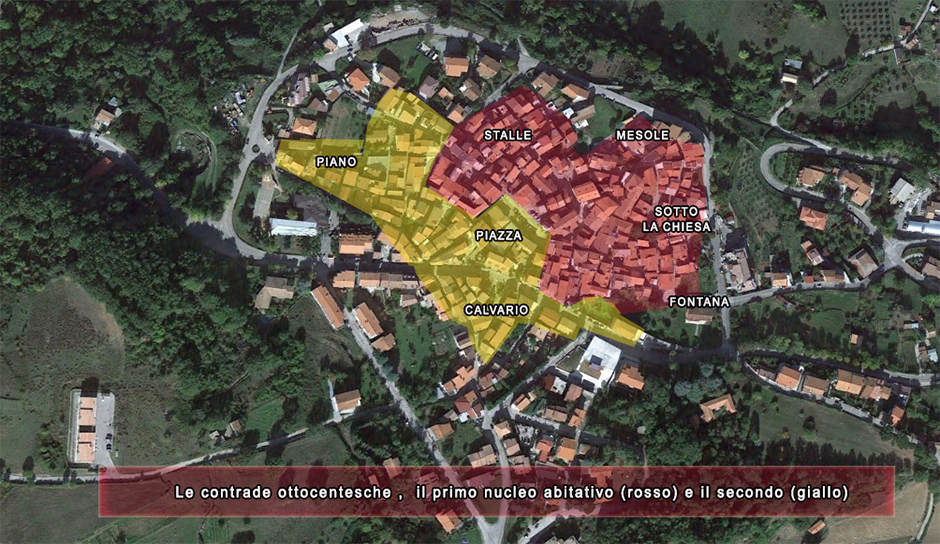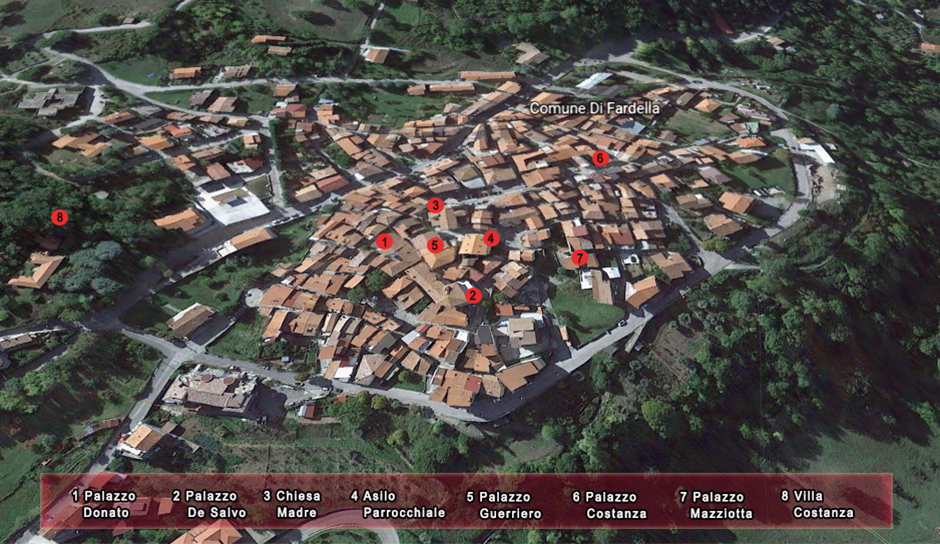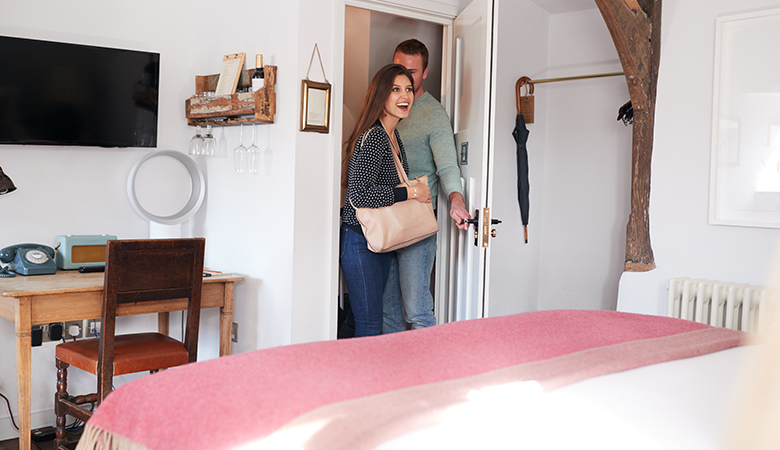Old Town
Architectural - Cultural Heritage
URBAN PLANNING
The presence of a hill south and terraced land with a significant difference in height, which would have made it difficult to build there, led the first settlement being developed from the “Stalle” area overlooking the so-called “Chiane”, with a wide view of the Serrapotamo valley.
In the 1800s, streets still did not have well-defined names. Indeed, the houses had no number and the village was divided into neighbourhoods, or streets: Under the Church, the Piazza, the Stables, the Fountain, Mesola, Calvario, Piano.
The sacred building was erected, on the highest point of the plateau, thereby influencing the development of the entire complex with the Town Hall Square, which soon became the centre of political and religious life, with the Grosso, De Salvo and De Donato palazzos, families who had all held the mayoral office.
This is precisely where the pharmacy remembered as ”one of the most elegant in the province” was built in 1893. It was owned by chemist and pharmacist Domenico De Salvo and had a lab and everything needed for tests, including a microscope.
In the 1950s, the square was given its current layout with the Parish Nursery, which subsequently also served as an orphanage, by Mr and Mrs Ramaglia, who had emigrated to America.
A series of lanes and steps, the thoroughfares of the first north-eastern core, used to branch out from the church. At the same time, the north-western area developed with the Mazziotta and Costanza buildings, together with other two-storey working-class dwellings with a profferlo, an outside staircase with an arcade underneath, according to the needs of peasant life.
The land, marshy and damp, allowed for a supply of water thanks to reservoirs in the gardens or houses, indeed according to the saying, “wherever you dig in Fardella you find water”.
The Strada Regia was built in the mid-1800s and was a fundamental thoroughfare for the subsequent development of the town, followed by Corso Vittorio Emanuele at the end of the century, which is still the town’s high street.
In the early 1900s, the roads were wide, but still without cobblestones. Like the buildings, they still featured the local limestone called murgigna, quarried in the area.
In the second half of the century, and especially in the 1970s, the town grew along the street currently known as Via De Salvo, in the neighbourhood called Apita (fir), which once belonged to the same family.
Is key role, acquired with the construction of the Sapri-Ionio provincial road, was lost following social and economic changes and the completion of the Sinnica state road, which led to the development of the towns in the Sinni valley to the detriment of those on the hills.
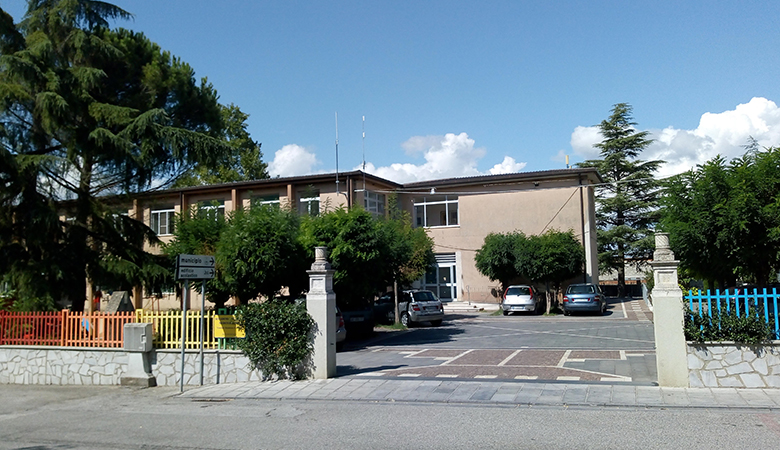
Edifici
Comunali
Leggi ancora...
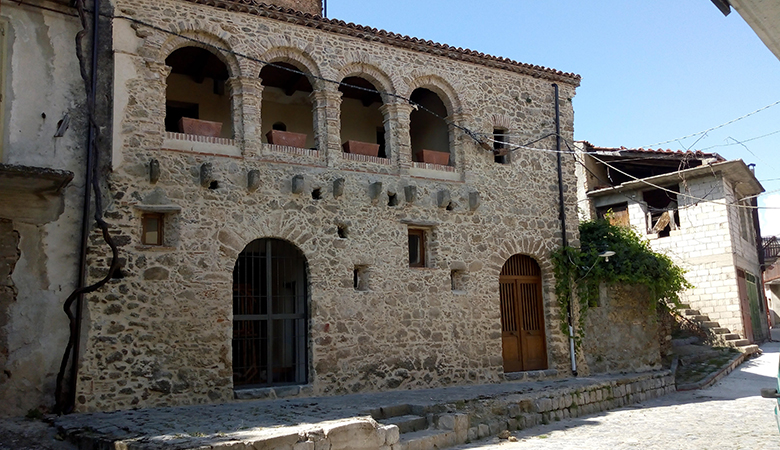
Edifici Storici Monumentali
Leggi ancora...
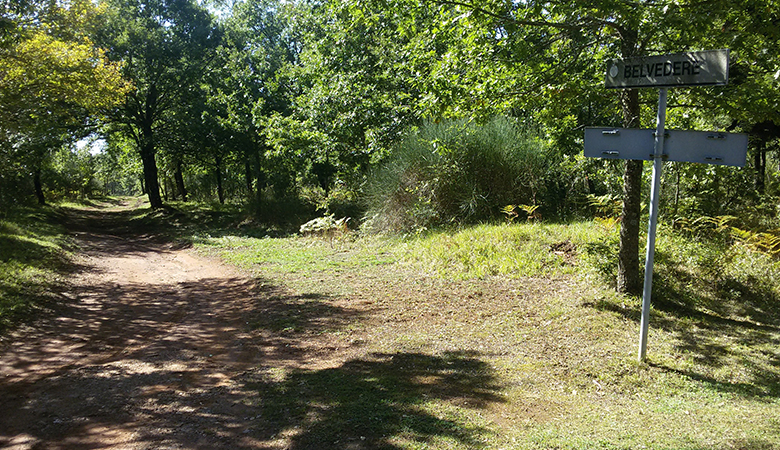
Aree Verdi e Parchi
Leggi ancora...






